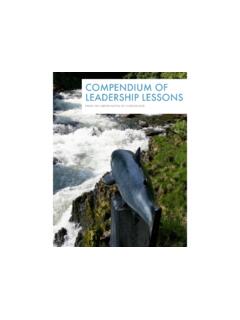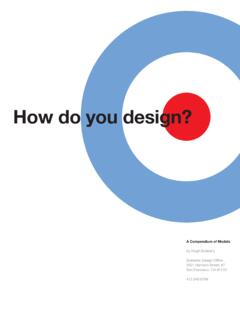Transcription of The Do It Yourself Credit Repair Manual - tiptopwebsite.com
1 Premier Wealth StrategiesPresentsThe Do It YourselfCredit Repair ManualTable of Contents Chapter 1- Introduction Chapter 2 - Credit Chapter 3 - Credit Repair Companies Chapter 4 - Credit Reporting and Credit Reporting Agencies Chapter 5 - Credit Reports Chapter 6 - Credit Protection Laws Chapter 7 - The Credit Repair Process Chapter 8 - Credit Repair Strategies Chapter 9 - Building/Rebuilding Credit Appendix I - Credit Repair Form Letters Appendix II - Deciphering Credit Report FormsChapter 1 - Introduction Credit problems in the United States are reaching epidemic proportions. In going from the financial excesses of the 80's to the turbulent 90's, many good people have experienced the horrors of not having enough cash to meet all their monthly obligations. 'There are the Credit card bills, utility bills, car payments, house payments, etc.
2 That all need to be paid every month. And in choosing how to make all these payments, it is all too common that some payments fall behind and subsequently damaging your good Credit rating. And when you add in all the Credit problems that are the result of data entry and reporting errors, computer errors and outright fraud, the number of people who are affected by "bad" Credit grows tremendously. In fact, if bad Credit were a disease, it is such a large problem that it would be labeled as an epidemic. It is impossible to approach a group of people nowadays and not find someone with some Credit problems. If I were to venture a guess based on conversations with my fellow Americans, I would say that over 25% of all the people know they have some sort of a Credit problem. And there are another 20% who are unaware that they have some sort of a Credit problem.
3 Like many financial planning matters, it is very easy to believe that bad Credit will not have an impact on your life. This is just not true. Bad Credit , even a little bit, can make it difficult to impossible to get a Credit card, new car, house, or even certain types of jobs. It can affect your life no matter who you are. Bad Credit is not limited to the poor. Many wealthy people like doctors, lawyers, and corporate executives have bad Credit . They are affected in numbers just as great as the rest of us more common people. Contents Of This Book This book supplies you with all the tools you need for your Credit self defense plan, from getting your first loan or Credit card all the way through reporting and rebuilding your Credit after a disaster. This book is divided into nine chapters devoted to describing this process to you.
4 Briefly, I'd like to introduce the remaining chapters to you. Chapter 2 - " Credit " is a discussion about Credit ; what it is, how to get it, and how to keep it. Chapter 3 - " Credit Repair Companies" is a discussion about Credit Repair companies and how they operate. Chapter 4 - " Credit Reporting and Credit Reporting Agencies" is a discussion of how Credit entries are tracked. It discusses how information is gathered, what kind of information is gathered, what is done with this information, and how errors commonly creep into the system. Chapter 5 - " Credit Reports" is an in-depth discussion of Credit reports, how to get them and more importantly, how to read 6 " Credit Protection Laws" is a description of your rights under the law. It discusses the rights you have under the law and how you can use them to your benefit.
5 Chapter 7 - "The Credit Repair Process" is the heart of the entire book. This chapter gives a step-by-step guide to analyzing and repairing your Credit report. Chapter 8 - " Credit Repair Strategies" is a compendium of examples on how you might handle various complex situations. It takes you through the entire Credit Repair process for several different Credit problems. Chapter 9 - "Building/Rebuilding Credit " provides information on building Credit if you are just starting out. It also provides information on how to rebuild a solid Credit rating even if you still have bad Credit . Appendices are provided to answer commonly asked questions as well as providing detailed information on all those mysterious codes in your Credit report. Also included are several sample letters for you to use when writing to various creditors and Credit reporting agencies and information on how to sort out all those complex fields in your Credit 2 Credit What is Credit ?
6 Why do I need it? How do I get it? These are very important questions. Credit has a major impact on your lifestyle and flexibility of choice in this world of ours. This chapter is a detailed exploration of Credit and its significance in our lives. Credit is one of those words that have many different definitions. For our purposes, it has two main definitions: 1) confidence on the lenders part of your ability and intention to repay any obligations you incur and 2) the time allowed for payment of goods obtained on trust. In simple English, Credit is your ability to get a loan from a lender or get a Credit card and a measure of your ability to repay that loan in a timely manner. Credit In Everyday Life A large percentage of Americans operate some pact of their lives on a Credit basis.
7 You may have a car loan or a Credit card. These are Credit instruments. You may have a house, the major Credit purchase in most peoples lives. Even utility payments are a Credit transaction because you use the utilities services before paying for them. Since Credit is so prevalent in all our lives, it is vital that we maintain a good Credit rating if we want our lives to ran smoothly. While it is possible to live with no Credit or even bad Credit , it severely limits your options in today's society. How To Get Good Credit Given credits importance in society, how do you go about getting Credit ? How does your application get evaluated?To get Credit , you must make an application to a lender for Credit . You fill out a form that asks for information about you, your job, your income, and sometimes your financial obligations (like the cost of rent/home mortgage, etc.)
8 This information is analyzed by the creditor and if it is deemed positive, you are granted the Credit you requested. Types Of Credit In general, there are two types of Credit you can obtain; secured and unsecured. Secured Credit means that the loan is secured by the merchandise purchased with that loan. For example, if you buy a car, that is a secured Credit transaction because the lender can repossess the car if you do not repay the loan in a timely manner. Even Credit card purchases are secured. This is because the Credit card issuer can legally take back the merchandise you purchased if you default on the payments. But this is very rarely done for Credit cards. The Credit cud issuer doesn't want books and TVs, not to mention the meals and gas, etc. you charged on your Credit card.
9 So Credit card issuers usually treat a default in the same manner as unsecured Credit is treated, Unsecured Credit means that you were lent money on the strength of your signature. This is usually called a signature loan. There is no specific merchandise backing the loan, just the lenders belief that you will repay the money. The first step in getting Credit is figuring out what you need it for. Are you trying to get a car, boat, Credit card, or something else? Generally, if it is a major purchase, your lender (the car dealership, home mortgage lender, etc.) will help you fill out all the paperwork. If it is just a Credit card you are applying for, you must shop around on your own. Find a bank offering a low interest rate. Ask them for a copy of their application. Then fill out all the information they are asking for as accurately as you can.
10 How You Are Evaluated For Credit The lender will then use this information for two things. First, the application will be used to get a copy of your Credit report from one or mom Credit reporting agencies. (In general, for larger loans, like a car Or house, two Credit reporting agencies will be contacted and for smaller loans, like Credit cards, only one Credit reporting agency will be contacted). Second, your application, along with your Credit report, will be used to "score" you. Creditors use a scorecard to evaluate your creditworthiness. If you score high enough and, in their eyes, can handle the additional debt load, you are granted the loan. If you score too low, you are rejected. If you are in the gray middle zone, it becomes a judgment call by the lender. If the lender feels comfortable about you, your marginal status will turn into an approval.









